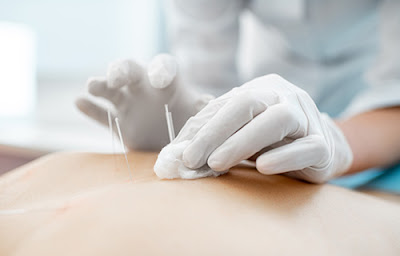A Primer on Medical Acupuncture
A Beginner's Guide to Medical Acupuncture, is a relatively painless ancient Chinese technique. It can aid in the management of a variety of medical conditions, including chronic pain and fatigue. There is a risk of injury, rare infections, minor bleeding, small bruises, and dizziness with needle puncture.
Acupuncture is a proven treatment with a long track record of success. Most courses involve a series of 10 to 20 treatment sessions, each lasting 30 to 90 minutes. The majority of patients report a mild sensation at the site of the puncture, but no real pain.
Have you ever felt an overwhelming desire to be pierced by a dozen needles? When most people hear the word "acupuncture," they envision this. It's no surprise that most people regard this technique with suspicion, if not horror. However, this relatively painless ancient Chinese technique has helped millions of people relieve their symptoms. When used correctly, it can aid in the management of a variety of medical conditions, including chronic pain and fatigue.
What is the procedure for needle puncture?
Chinese traditional medicine practitioners believe in energy flows. This energy, known as Qi, circulates throughout the body via pathways known as meridians. Meridians run very close to the skin's surface in some areas and can be accessed with needles. These pipes, like plumbing, can become clogged or flow in the wrong direction, causing health issues. The insertion of needles at these points is intended to aid in the removal of blockages and the normalization of flow.
It sounds like a made-up explanation with no basis in reality, but acupuncture has been supported by numerous scientific studies. Although the precise scientific basis is unknown, recent theories appear to implicate complicated neurochemical effects in the brain, nerve to spinal cord impulse modulation, and microscopic connective tissue changes.
What are the potential risks and side effects?
It is not new to use things that are not completely understood for the treatment of medical conditions. For decades, doctors used penicillin and aspirin solely on the basis of their beneficial effects, with no knowledge of how they worked. What matters most are the outcomes. It is equally important, however, to ensure that the technique is used safely.
Acupuncture, like other treatments for medical conditions, may have some side effects. Medication can cause side effects and allergic reactions, and surgery can result in infection and complications. There is a risk of injury, rare infections, minor bleeding, small bruises, and dizziness with needle puncture.
You can minimize the possible side effects by choosing a licensed acupuncturist. Most countries have either government licensing or professional organizations with extremely strict rules and regulations.
How are the treatments going?
An acupuncturist will conduct an initial evaluation of your medical history and current state of health. Multiple pressure points are palpated, and a treatment plan is devised. Most courses involve a series of 10 to 20 treatment sessions, each lasting 30 to 90 minutes. Needles will be carefully placed at the required points and kept in place for some time. The majority of patients report a mild sensation at the site of the puncture, but no real pain.
You will feel tired after each acupuncture session and may need to rest. Some people report an increase in energy levels. Acupuncture has a highly individual response. In some cases, symptoms are relieved immediately. Some patients may not notice the benefits until several sessions have passed. Do not be concerned, and keep your acupuncturist informed of how you are feeling to ensure that everything is going as planned.
You will never have to be afraid of needles again. Acupuncture is a proven treatment with a long track record of success. It is used to supplement current medical therapy and should not be used in place of current medications or treatments.
Chronic disease patients all over the world can now benefit from the safe application of this once-exclusive Chinese therapy.

No comments:
Post a Comment